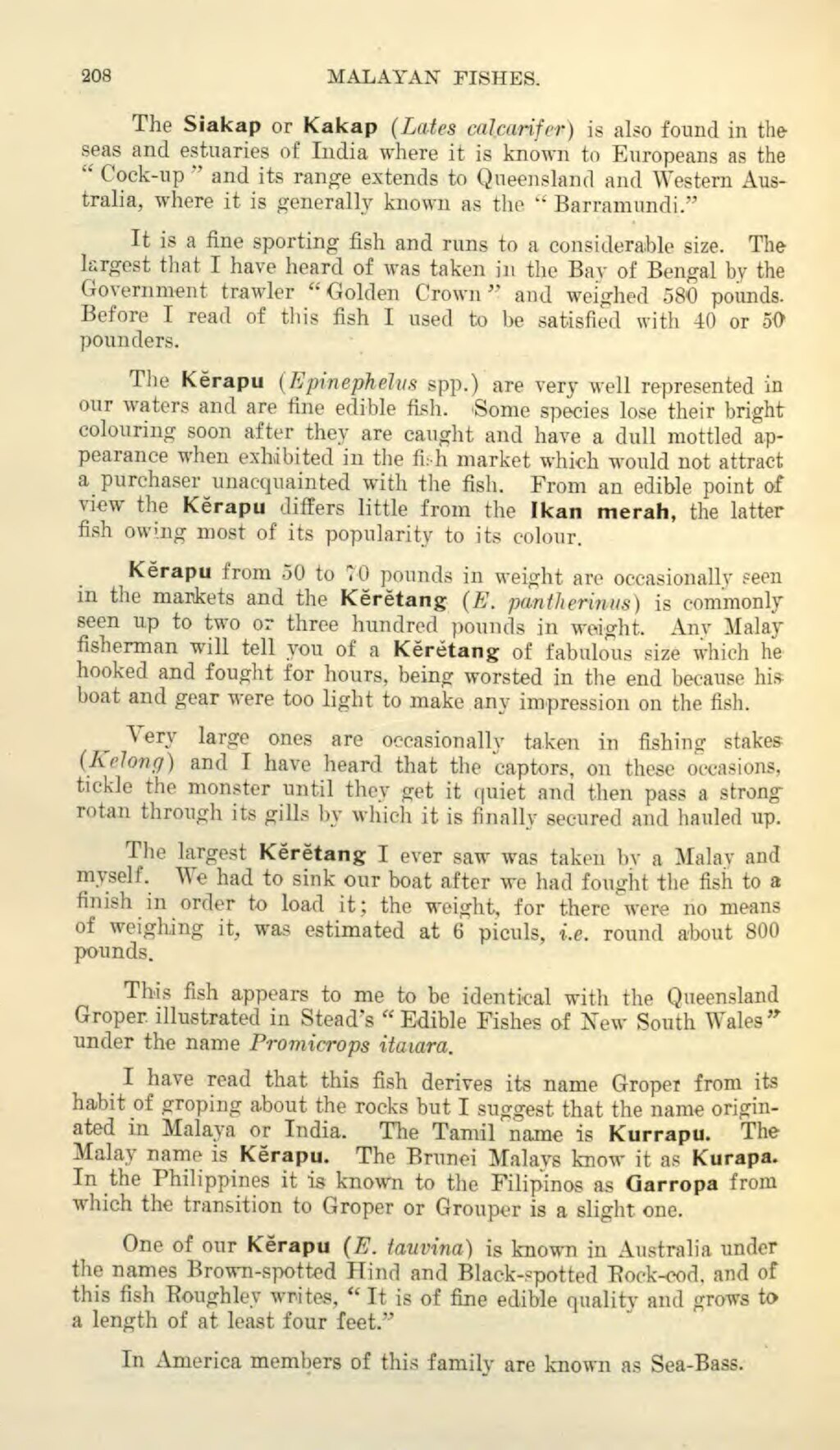The Siakap or Kakap (Lates calcarifer) is also found in the seas and estuaries of India where it is known to Europeans as the "Cock-up" and its range extends to Queensland and Western Australia, where it is generally known as the "Barramundi."
It is a fine sporting fish and runs to a considerable size. The largest that I have heard of was taken in the Bay of Bengal by the Government trawler "Golden Crown" and weighed 580 pounds. Before I read of this fish I used to be satisfied with 40 or 50 pounders.
The Kĕrapu (Epinephelus spp.) are very well represented in our waters and are fine edible fish. Some species lose their bright colouring soon after they are caught and have a dull mottled appearance when exhibited in the fish market which would not attract a purchaser unacquainted with the fish. From an edible point of view the Kĕrapu differs little from the Ikan merah, the latter fish owing most of its popularity to its colour.
Kĕrapu from 50 to 70 pounds in weight are occasionally seen in the markets and the Kěrětang (E. pantherinus) is commonly seen up to two or three hundred pounds in weight. Any Malay fisherman will tell you of a Kěrětang of fabulous size which he hooked and fought for hours, being worsted in the end because his boat and gear were too light to make any impression on the fish.
Very large ones are occasionally taken in fishing stakes (Kelong) and I have heard that the captors, on these occasions, tickle the monster until they get it quiet and then pass a strong rotan through its gills by which it is finally secured and hauled up.
The largest Kěrětang I ever saw was taken by a Malay and myself. We had to sink our boat after we had fought the fish to a finish in order to load it; the weight, for there were no means of weighing it, was estimated at 6 piculs, i.e. round about 800 pounds.
This fish appears to me to be identical with the Queensland Groper illustrated in Stead's "Edible Fishes of New South Wales" under the name Promicrops itarara.
I have read that this fish derives its name Groper from its habit of groping about the rocks but I suggest that the name originated in Malaya or India. The Tamil name is Kurrapu. The Malay name is Kěrapu. The Brunei Malays know it as Kurapa. In the Philippines it is known to the Filipinos as Garropa from which the transition to Groper or Grouper is a slight one.
One of our Kĕrapu (E. tauvina) is known in Australia under the names Brown-spotted Hind and Black-spotted Rock-cod, and of this fish Roughley writes, "It is of fine edible quality and grows to a length of at least four feet."
In America members of this family are known as Sea-Bass.
